Tucked deep in the Himalayas, Nepal is a very beautiful destination to visit because of its stunning alpine landscape. Not only does it include some of the world’s highest mountains, but its extensive valleys and rolling foothills are lined with sacred sites like temples, monasteries, and shrines, contributing to the region’s well-known cultural legacy.
Located between China and India, with Bhutan and Bangladesh also nearby, Nepal is sometimes referred to as the “roof of the world” owing to its elevated position. Surprisingly, it includes eight of the world’s highest mountains, the largest of which is the renowned Mount Everest. It is a long and narrow landlocked country that is home to the Himalayas, as well as luscious forests, glittering alpine lakes, and beautiful river valleys and imposing gorges.
Kathmandu, the capital of Nepal, is often referred to as the “City of Temples” due to the abundance of religious buildings and other cultural attractions found there. Both Durbar Square and Swayambhunath have many palaces, temples, and pagodas, but there is much more to do there than just sightseeing.
Close to Kathmandu are the ancient cities of Bhaktapur and Patan. Janakpar, with its sacred pools and beautiful temple, is also a famous tourist destination, while the tranquility of Lumbini, where the Buddha is said to have been born, draws large numbers of Buddhist pilgrims.
Most tourists visit Nepal not only to learn about its fascinating history and see its incredible religious landmarks, but also to explore the majestic Himalayas. While some brave souls try to reach the peak of Mount Everest, the vast majority of hikers choose to traverse the Annapurna Circuit, which offers breathtaking scenery at every turn.
Incredible natural beauty can be seen across Nepal. But what most people don’t realize is that this little Asian country has a lot more to offer than just the Himalayas. The lowlands are home to dense jungles teeming with animals and exotic plants.
Wildlife populations in Nepal are thriving because of decades of conservation work that has left the country’s terrain relatively undeveloped. The consequence has been a 60 percent rise in the number of Royal Bengal tigers in only the past decade, and Nepal can now claim to be home to among the world’s last surviving populations of one-horned rhinoceroses.
The locals place a high spiritual value on their terrain, and as a result, many of the mountains and lakes in the area have folkloric connections. Within the parks’ bounds are several indigenous villages, whose residents are usually more than ready to tell tourists about their cultures.
If you’re thirsty for nature and culture, there’s nowhere better than Nepal. Nepal’s stunning national parks are an international model for conservation efforts, community collaboration, and park design.
10. Banke National Park
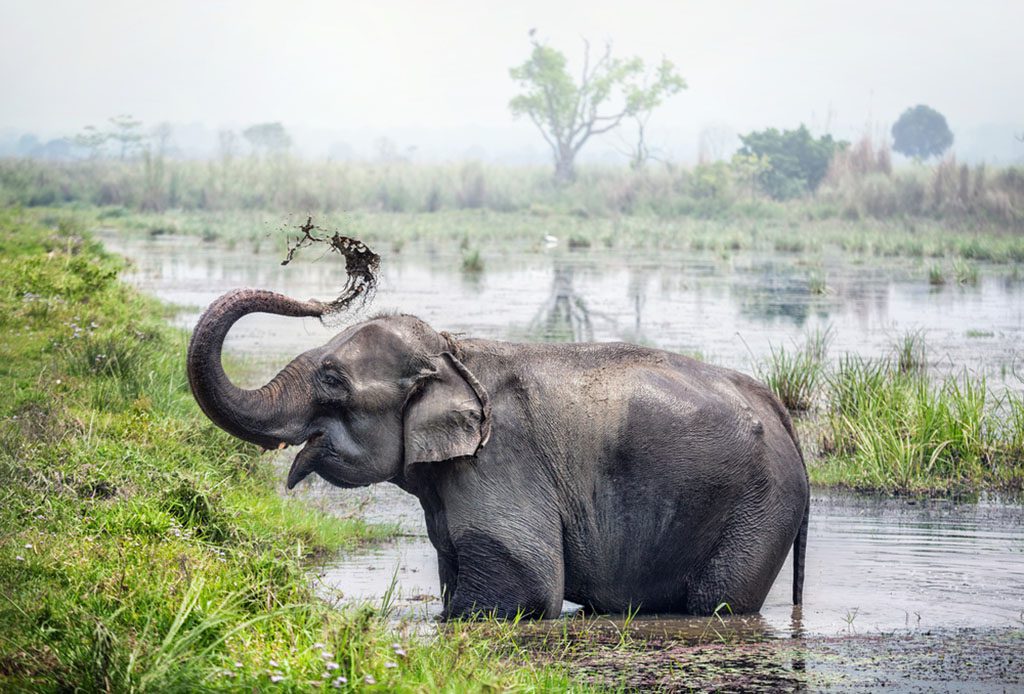
A majestic elephant enjoying a refreshing bath in the river of Banke National Park, Nepal. Image source: Pikoso.kz/Shutterstock.com
This magnificent small national park joined the national parks system to help save local endangered species. The tiger population inside its borders has doubled as a result of its conservation efforts.
Over 300 types of birds, innumerable reptile and fish species, and the critically endangered Asiatic elephant all live freely here. Banke National Park is located in an area that has been referred to by locals as the “gift of the earth” for centuries. Many of the park’s residents still adhere to more ancient ways of life.
There are eight very different ecosystems that make up the gorgeous scenery, from forests and grasslands to mountain ranges. Several wildlife refuges are linked to this area. Bardia National Park, which is connected to India’s Katarniaghat Wildlife Sanctuary and Bangladesh’s Suhelwa Wildlife Sanctuary, is located to the west. The fact that Nepal has already established a national park so soon after beginning its conservation efforts is impressive.
9. Shuklaphanta National Park
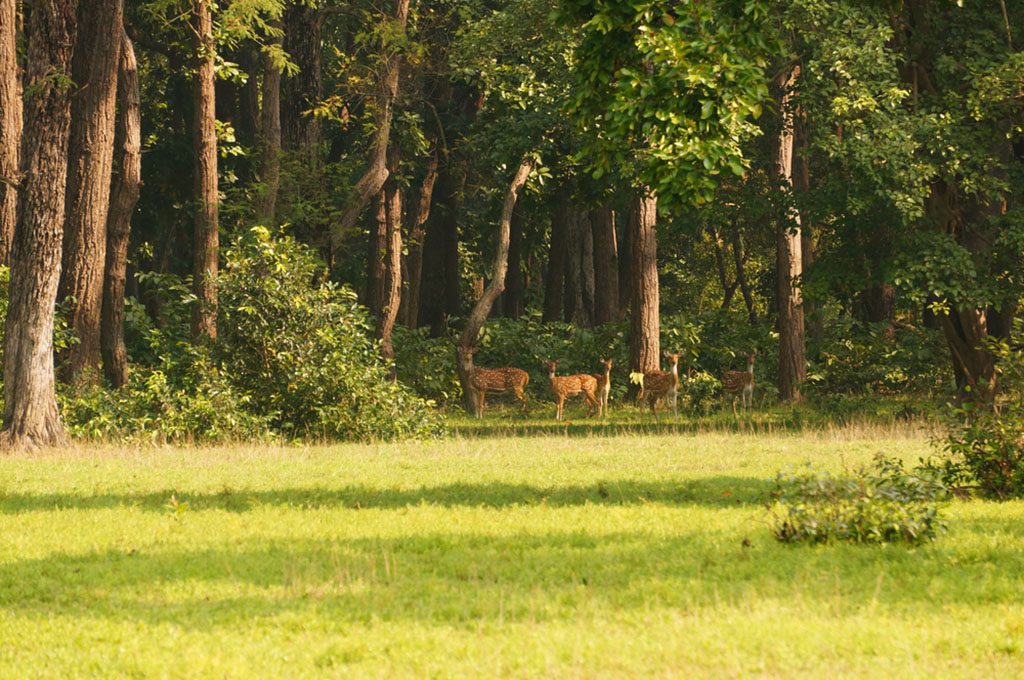
A graceful spotted deer roaming in the lush jungle of Shuklaphanta National Park, Nepal. Image source: Kiramogilenskikh/Shutterstock.com
Shuklaphanta was once used as hunting grounds for Nepal’s nobility but was converted into a wildlife reserve in the 1990s. On the day dedicated to celebrating wildlife, World Wildlife Day 2017, it was officially designated as a national park. The park’s swamp deer and elephant populations are major draws. Tigers and rhinos are also sometimes seen by tourists.
An estimated 17 tigers call the park home, according to a census taken in the previous year. Grasslands, forests, riverbeds, and tropical wetland ecosystems are home to a wide variety of plant and animal life.
Plus, Shuklaphanta is well-known among birdwatchers as a fantastic location. In all, the park is home to around 400 different bird species. Some of Negal’s most notable bird species call this area home, including a plethora of eagles, owls, woodpeckers, vultures, and the stately painted stork.
8. Khaptad National Park

A picturesque pathway leading through the scenic landscapes of Khaptad National Park in Nepal. Image source: Sadishj6/Shutterstock.com
Amazing Western Nepal is well represented in Khaptad. It’s a treat for the senses and a cure for the soul. Since Khaptad Baba came to the region in the 1940s to meditate, he is remembered with a park dedicated in his honor. Every year, hundreds of people from all over the world make the journey to his ashram because of its spiritual significance.
Though guests are welcome, they are not allowed to bring in any booze, cigarettes, or meat of any kind. Saileswari, a historic town with many Hindu temples, is also located inside the park’s boundaries, and it is linked to the Goddess Parvati’s teachings at Ramaroshan. Badimalika and Surma Sarovar both have ties to historical towns and significant texts in Hinduism.
Green undulating slopes and vistas of the Himalayas make up a breathtaking environment. On the other hand, summers are quite pleasant since temperatures rarely go below zero or over twenty degrees Celsius.
7. Makalu Barun National Park

The grandeur of Mount Makalu, located in the breathtaking Makalu Barun National Park, Nepal Himalayas. Image source: Daniel Prudek/Shutterstock.com
What a beautiful and secluded national park. There are some of the world’s tallest mountains here, and they dominate the landscape and make visitors feel small. The park is named after Mount Makalu, which rises to an astonishing 8,463 meters (27,838 feet), making it the fifth-highest peak in the world. Many of the surrounding mountains also exceed 7,000 meters in elevation.
Makalu Barun National Park has an astonishing amount of biodiversity and is the only protected area in the world that rises more than 8,000 meters above sea level. Surprisingly diverse plant and animal life can be found here, including more than 40 species of orchids and other exotic plants. Several species of deer and the Himalayan black bear call this region home, as do the elusive snow leopard and critically endangered red panda.
6. Shey Phoksundo National Park
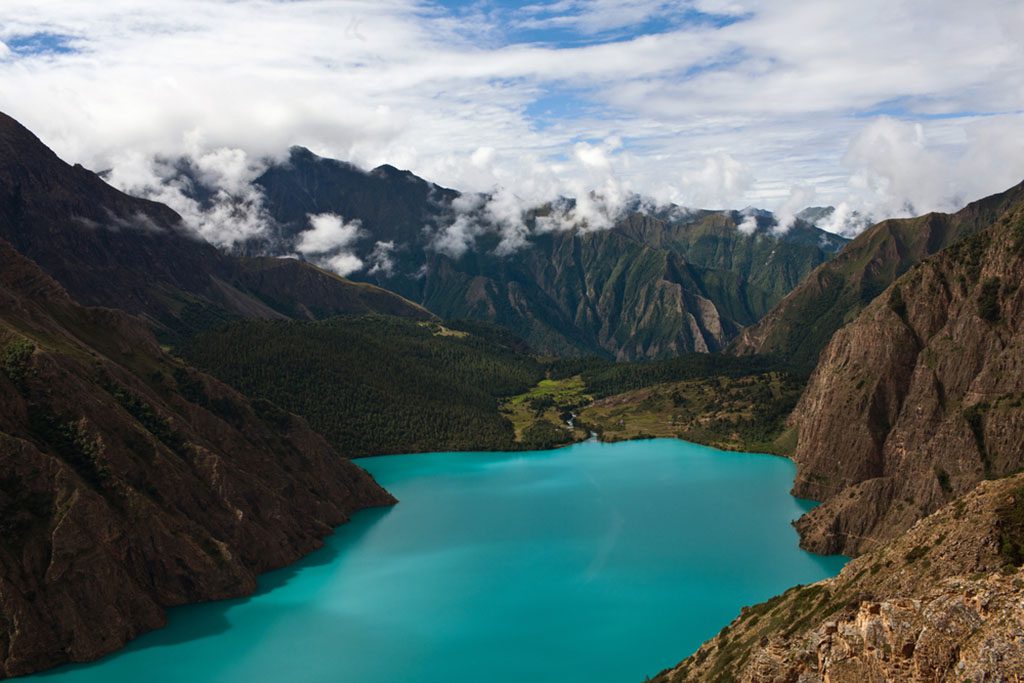
the turquoise Phoksundo Lake nestled in the Dolpo area of Shey Phoksundo National Park, Nepal. Image source: Storm Is Me/Shutterstock.com
Shey Phoksundo National Park is the biggest in the country and quite beautiful. It’s home to the breathtaking Phoksundo Lake. At an elevation of more than 3,000 meters, this deep blue-green lake is Nepal’s largest and deepest.
Wildlife as diverse as blue sheep, snow leopards, Tibetan yaks, and musk deer all call the area around the lake home. The park, like other Nepalese national parks, is a popular trekking destination, but the views of Phoksundo Lake make it unique.
Approximately nine thousand people make their homes in the park’s villages, the majority of whom adhere to Bon Buddhism, a traditional faith with ties to both Buddhism and Animism. In light of this, the park has a number of places of worship. As a bonus, the park’s environment is ideal for the Paralasa Nepalaica butterfly, the highest-flying butterfly in the world, so tourists who are lucky may get to see one.
5. Shivapuri-Nagarjun National Park
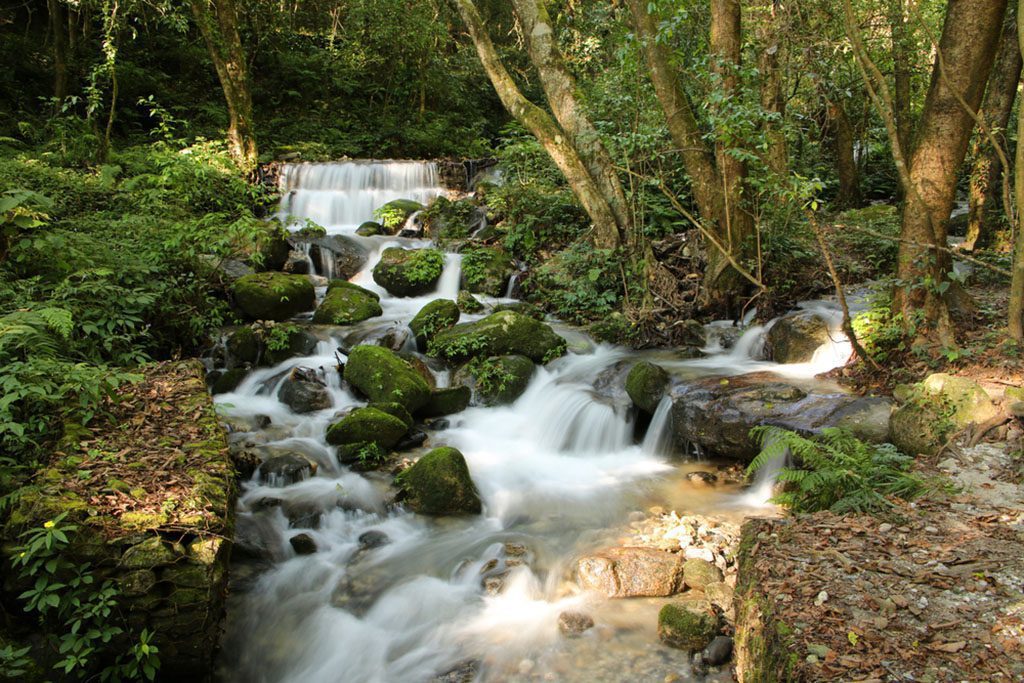
A stunning waterfall cascading down amidst the lush greenery of Shivapuri Nagarjun National Park in Kathmandu, Nepal. Image source: Lisa Strachan/Shutterstock.com
Because of its proximity to Katmandu, this park has become a popular destination for city residents and tourists alike. We were really blown away by this park. Here, sightseers have a great opportunity to reconnect with nature.
Numerous well-marked routes go across scenic landscapes, including verdant hills, mountains, and forests. The park was given its name because of its connection to religious texts and the Hindu god Shiva.
The region’s abundance of medicinal plants is also highly valued by residents. More than a hundred different types of mushrooms, over two thousand different kinds of flowers, and 16 different types of epidemic plants make up the rest of the flora. Leopards, monkeys, and black bears are just a few of the native animals.
4. Bardiya National Park
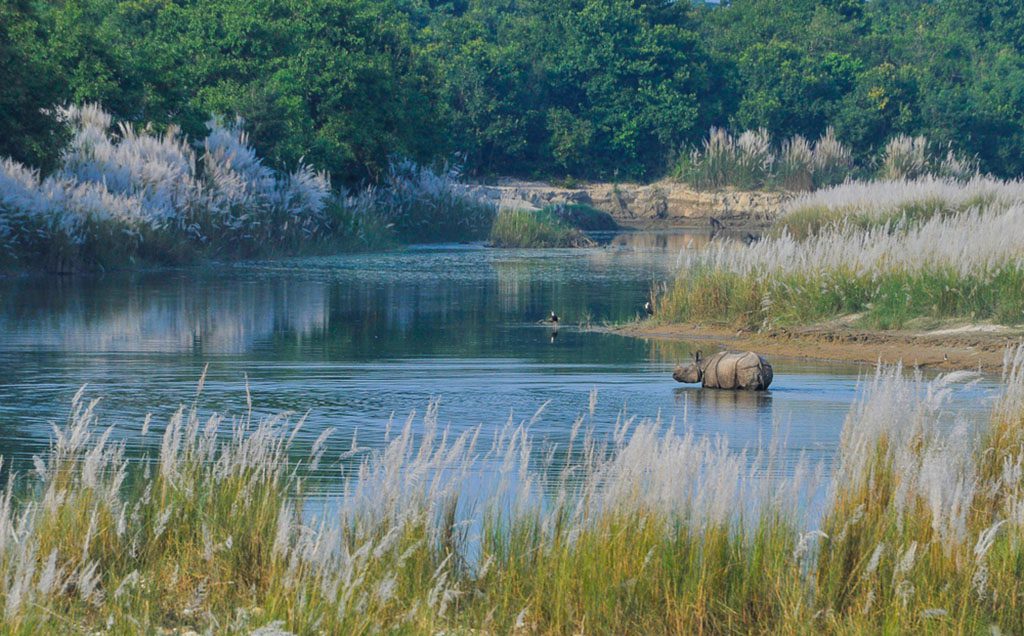
A glimpse of the untamed wilderness found within Bardiya National Park, Nepal. Image source: Sundar Photo/Shutterstock.com
Alive with activity, this park is also relatively untouched, making it one of Nepal’s best kept secrets. Trees, meadows, and riverine forests make up the bulk of its landscape. Several rivers wind their way through the park, and their banks are decorated with spectacular displays of water lilies and lotuses.
The endangered one-horned rhinoceros, as well as elephants, tigers, deer, and even the rare and elusive enormous dolphin, all call this region home. Peacocks and the other colorful birds that inhabit the park are a common sight for tourists. While the bulk of this verdant region is devoid of human habitation, it is nevertheless the traditional home of Nepal’s indigenous Tharu people.
3. Langtang National Park
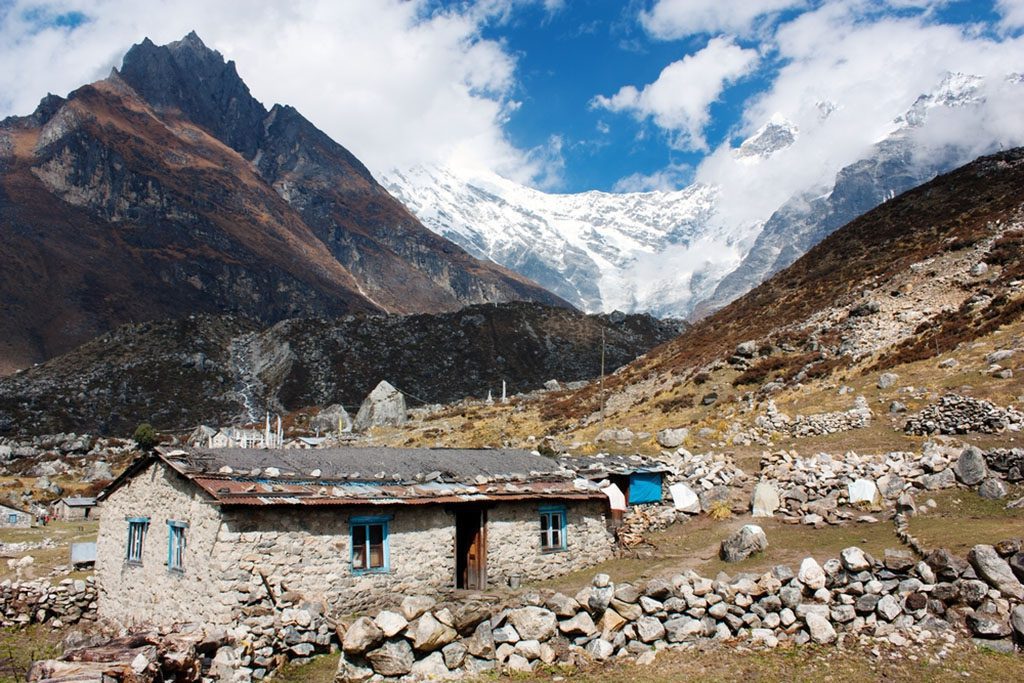
A traditional Nepalese building surrounded by the awe-inspiring Langtang Valley and Langtang Peak. Image source: Daniel Prudek/Shutterstock.com
Langtang, Nepal, is stunning since it is nestled amid the Himalayas. It has a wide range of climates, a diverse array of plant and animal life, and a long and storied history of human settlement. People come from all around to see the night skies that are displayed there.
As a result of the high elevation, the scenery contains alpine mountain ranges and pristine lakes. More than 100 people were killed in the 2015 avalanche that took away the village of Langtang, and their corpses were never found. The park is home to a number of spiritual sites. Black bears, monkeys, and the red panda have all been seen, and there are also regular reports of Yeti sightings.
2. Chitwan National Park
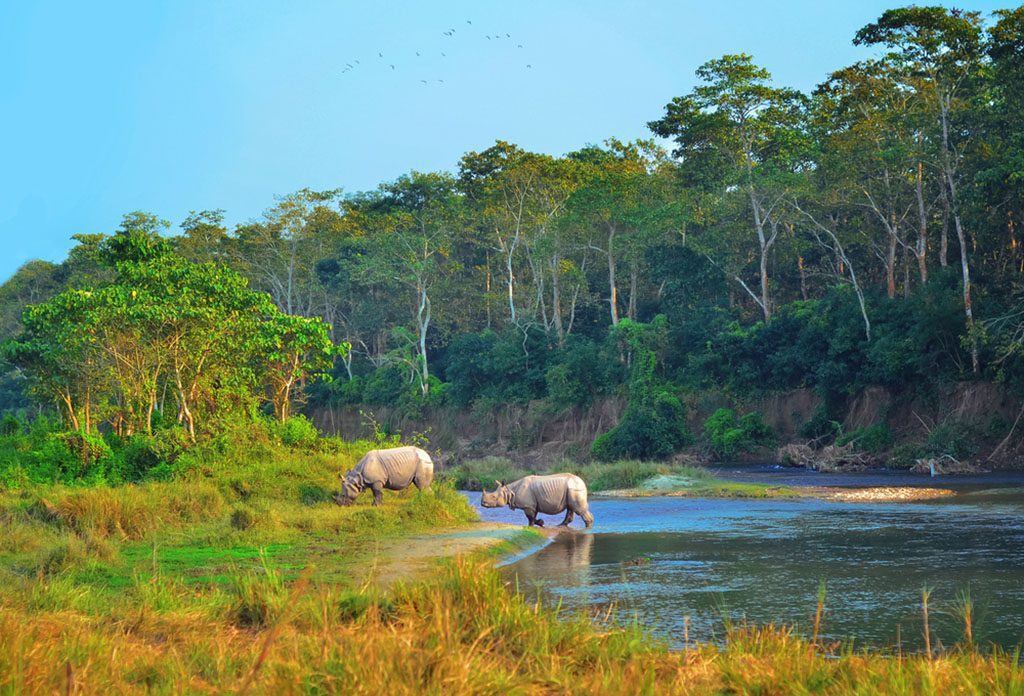
A captivating scene of the wild landscape featuring majestic Asian rhinoceroses in Chitwan, Nepal. Image source: natalia_maroz/Shutterstock.com
The lovely setting of this park is nearly as appealing as the chance to see wild animals. In this massive park, you can find everything from deep jungles to open savannahs to rushing rivers and lakes. Royal Bengal tigers, Gharial crocodiles, sloth bears, and the occasional leopard can all be seen here, as can one of the world’s last surviving populations of one-horned rhinos.
Numerous types of birds and rare plants and animals flourish there. Over the last three decades, animal populations have increased thanks to extensive anti-poaching and conservation initiatives on the part of activist organizations and government action. When compared to the Serengeti, this park is typically considered a close second for its wildlife. It really doesn’t let you down.
1. Sagarmatha National Park
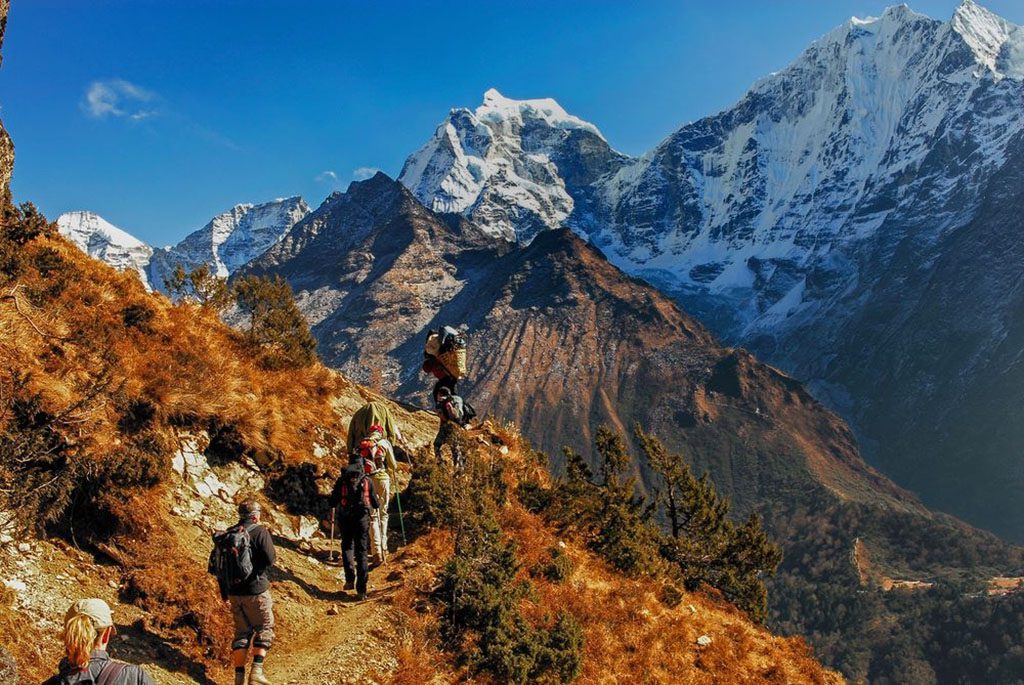
Hikers enjoying the scenic beauty of Nepal’s Khumbu Sagarmatha National Park. Image source: LUC KOHNEN/Shutterstock.com
Sagarmatha really is one of a kind. Mount Everest, the highest mountain in the world, can be found in this protected area. Famous animals like the snow leopard, lynx, bears, hares, and the Himalayan tiger also call the rough Himalayan mountain landscape home.
There are no roads in the area around the park, adding to its sense of seclusion and natural beauty. Spiritual importance is the reason for its widespread notoriety. Several hundred Sherpas call this area home, and many more visit the park annually to make pilgrimages.
The presence of Mount Everest is significant to the local population. Chomolungma, which translates to “Mother Goddess of the World,” is the name given to the mountain by the indigenous people of the area, who believe that spirits make their home there. Regardless of your motivation for going, this amazing park will not disappoint.


